Railroad Images
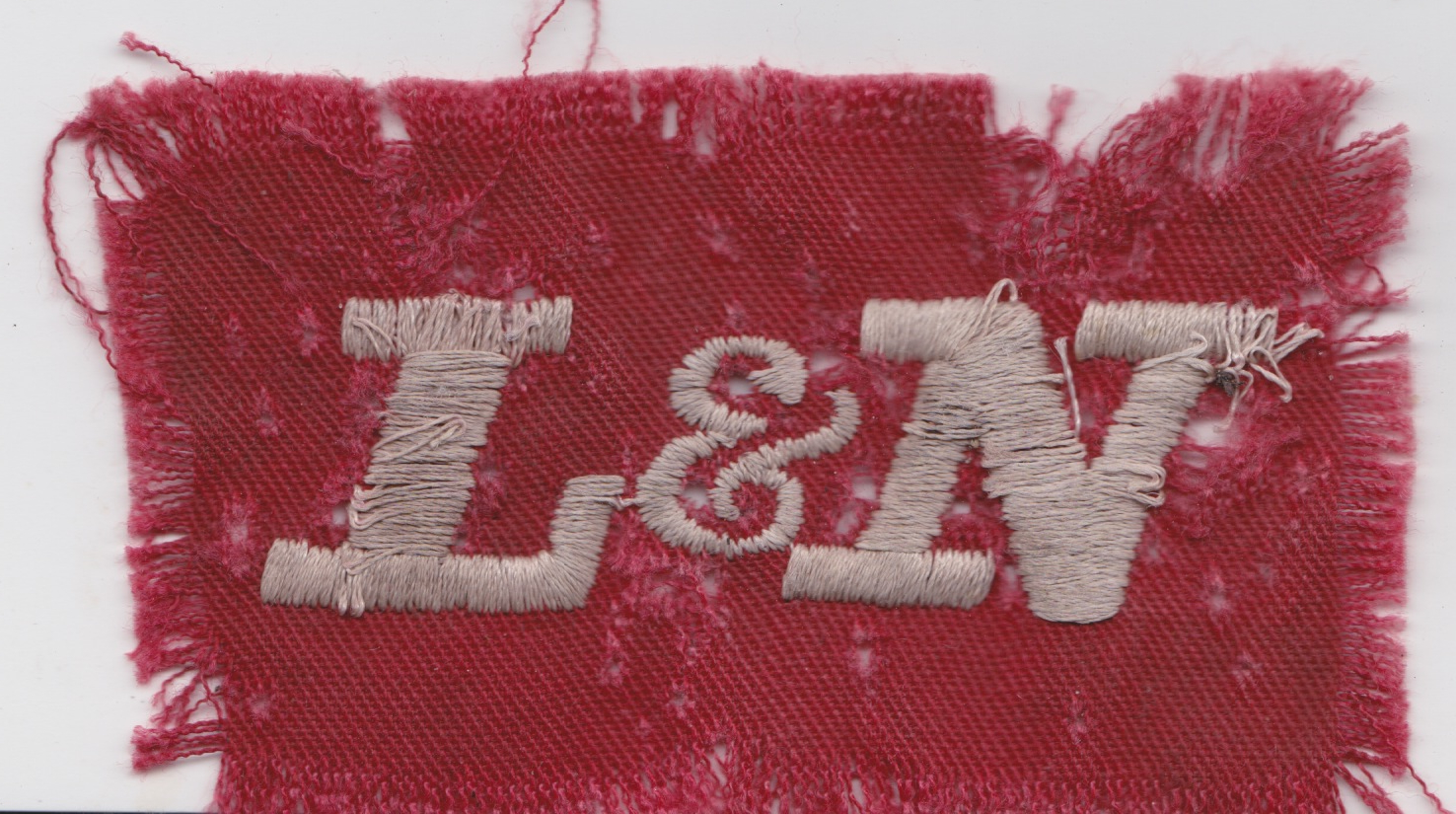
Biloxi
Ocean Springs
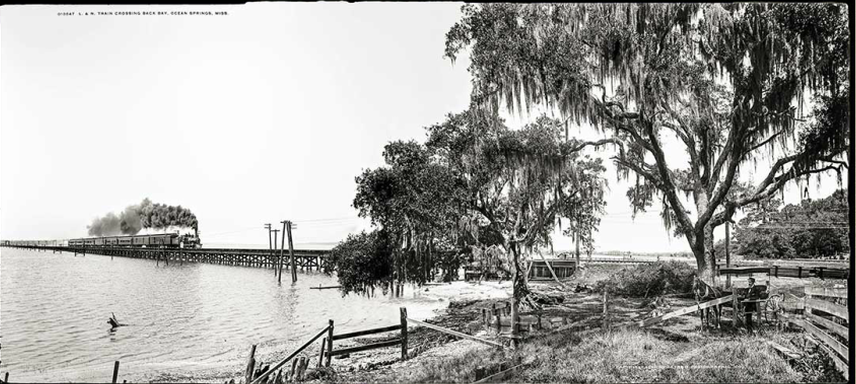
1901
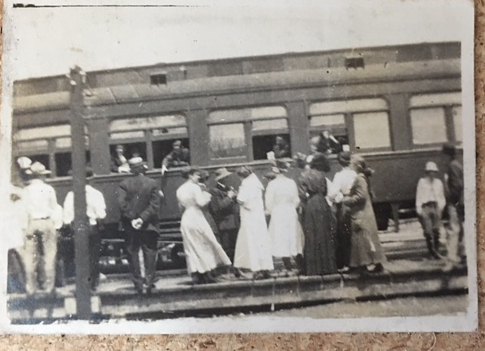
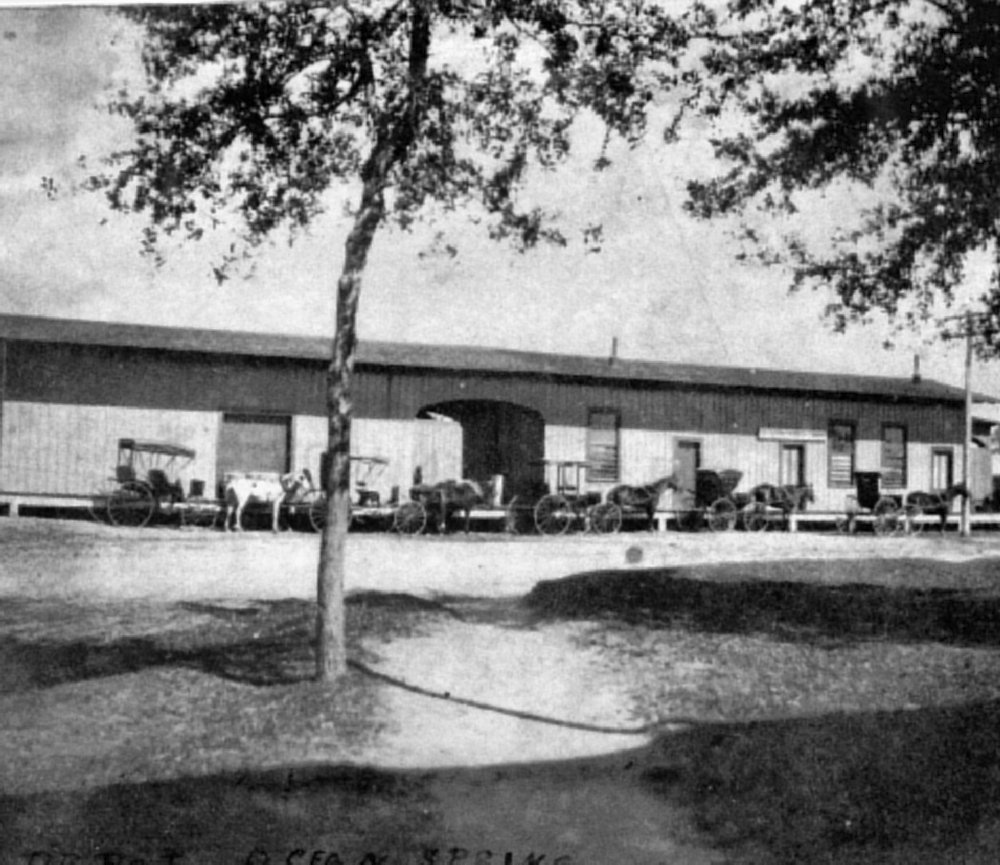
1912 Ocean Springs L&N Depot pre-1907
L&N RR BRIDGE BILOXI BAY
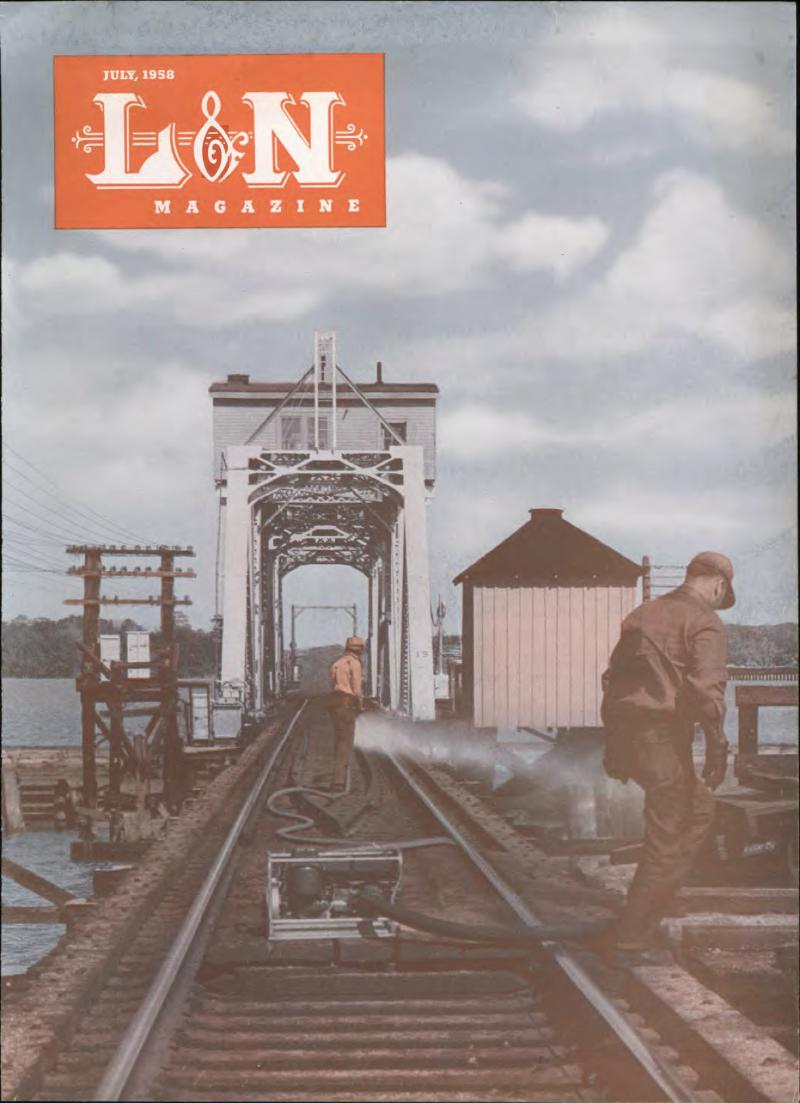
1958 L&N Magazine
[Courtesy of Jerome Lauchaussee]
RAILROADS
Time Line
1870
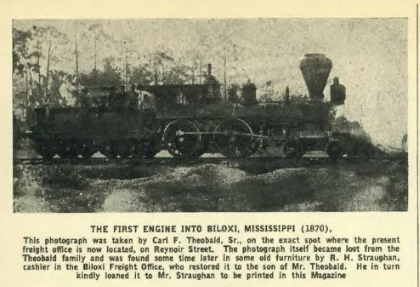
[L&N RR magazine, April 1934, p. 25-Courtesy of Jerome Lauchausse]
On October 29, 1870, the New Orleans, Mobile, & Chattanooga Railroad (Chartered 1866) completed the rail line between Mobile and New Orleans. Rail service commenced on November 21, 1870.
R.A Van Cleave (1840-1908) is erecting a store near the depot. Town lots near the depot were deemed overpriced by The Handsboro Democrat as Ocean Springs was regarded as a village.(The NOLA Republican, December 28, 1870, p. 8)
1871
The N.O.M. & C. was reorganized on April 18, 1871 and became the New Orleans, Mobile & Texas Railroad.
1873
The New Orleans, Mobile & Texas Railroad was foreclosed upon in the U.S. Circuit Court [Henry J. Gardner and Peter B. Butler v. N.O.M. & T.] for default of payment of interest on its $4 million in indebtedness to its bondholders. The road missed interest payments due in October 1872 and April 1873. It was ordered sold at auction in six months.(The New York Times, April 15, 1873, p. 1)
1875
An editorial in The Star of Pascagoula blasted the New Orleans, Mobile & Texas Railroad as "nothing more that or less than a gang of highway robbers, entitled to as little consideration from the people as so many bandits who rob and plunder the weak and defenseless in defiance of the law. The only remedy for these wrongs is the sale of the road. Refuse to patronize the road, even if undergo inconvenience in doing so.(The Star of Pascagoula, May 22, 1875, p. 2)
In June, D.B. Seal, District Attorney of Hancock County filed litigation against the New Orleans, Mobile, & Chattanooga Railroad (sic?). The plaintiffs were asking that the railroad build a draw bridge across the Pearl River. The present bridge was blocking the East Pearl River channel, which was needed for the lumber trade.(The Star of Pascagoula, June 12, 1875, p. 3)
1877
On April 1st, the New Orleans, Mobile & Texas Railroad almost doubled it fare to $.05 per mile. Before the passenger rate increase the cost of a round trip ticket to New Orleans from Pascagoula was $5 and to Mobile $2. After increase, the New Orleans fare was $10 and that to Mobile $4.10.(The Star of Pascagoula, April 6, 1877, p. 1)
1879
The new railroad bridge will soon be finished.(The Pascagoula Democrat-Star, September 12, 1879)
1881
On October 5, 1881, the L&N Railroad purchased all the assets of the reorganized New Orleans, Mobile, & Texas Railroad for $6,000,000. This acquisition included the Ponchartrain Railroad which ran seven mile from New Orleans to Milneburg on Lake Ponchartrain, and the one hundred forty-one miles of track, depots, the creosote plant at West Pascagoula (Gautier), stations, station houses, section houses, rolling stock, etc. between Mobile and New Orleans. (JXCO, Ms. Land Deed Bk. 5, p. 299)
1886
Charles Marshall (1848-1928), a native of Franklin Tennessee, was appointed Superintendent of the New Orleans & Mobile Division of the L&N Railroad in September 1886.(The Daily Herald, January 14, 1928, p. 1)
1891
In April, the L&N Railroad built an iron turn-table at Ocean Springs.(The Pascagoula-Democrat-Star, April 24, 1891, p. 2)
1893
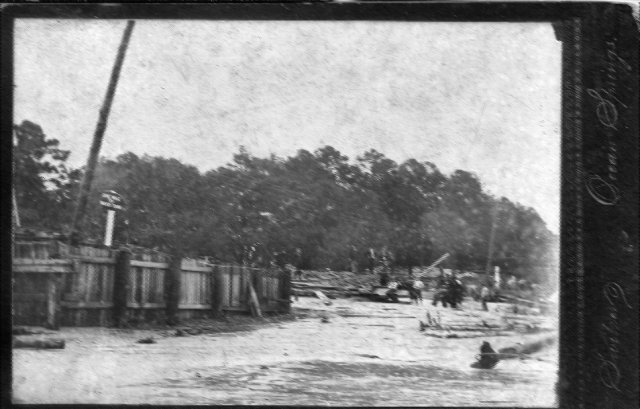
L&N RR Hurricane damage in 1893
1895
The Biloxi Railway was established by Dr. J.J. Lemon, president; J.C. Bradford, vice-pres.; E.G. Burklin, general mgr. and superintendent; Col. E.W. Morill, sec.-treas.; and W.H. Maybin, gen. attorney. Laying of track was to commence shortly as cars, rails, ties, etc. had been acquired. $8000 worth of company stock had been sold.(The Biloxi Herald, March 30, 1895, p. 8)
GILL AVENUE STATION [built 1895]
The L&N Railroad completed two new railroad stations on the east and west end of Biloxi. The Coast train and Excursion trains on Wednesday and Sunday will stop at both places. The L&N has named these stations as the Oak Street Station (east) and the Gill Avenue Station (west). Local citizens suggested the names Summerville (east) and Oakmere (west), but they were rejected by the railroad.(The Biloxi Herald, May 11, 1895, p. 8)
A fire in late September 1895 had destroyed the round-house which was adjacent to and north of the L&N depot. The depot was damaged by the blaze and water resulting from efforts to squelch the blaze. The station was entirely renovated in November 1895. Agent Weed, made numerous interior changes and the interior and exterior of the building was painted. Many felt that the Ocean Springs depot was the most attractive on this division of the L&N and a credit to the company. The Pascagoula Democrat-Star, October 4, 1895).
1896
Beginning December 14th, the Gulf & Ship Island Railroad became a regular U.S. Mail route.(The Biloxi Herald, December 12, 1896, p. 5)
1900
Nine hundred head of sheep driven to Ocean Springs from the Vancleave ranches of H.C. Havens, Thomas E. Ramsay, and George W. Tootle. They were shipped to W.L. Bramblett in three railcars to Paris, Kentucky.(The Pascagoula-Democrat-Star, May 18, 1900, p. 3)
1901
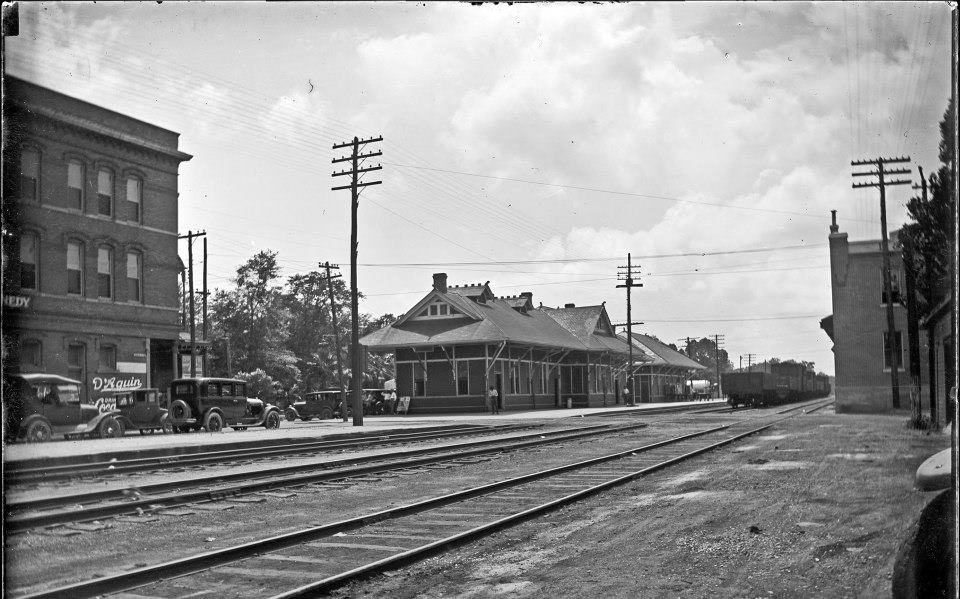
1901 NEW Biloxi L&N Depot
Plans for the new Biloxi depot were in the hands of T.J. Rosell & Company who was contracted to do the millwork.[The Biloxi Daily Herald, January 5, 1901, p. 8]
In early April, the erection of the new L&N depot at Biloxi was finished except for decorating and painting and was expected to open in two weeks.(The Biloxi Daily Herald, April 3, 1901, p. 8)
1905
The L&N RR announced that it would build a modern depot at Ocean Springs commencing in June.(The Biloxi Daily Herald, January 11, 1905, p. 5)
1907
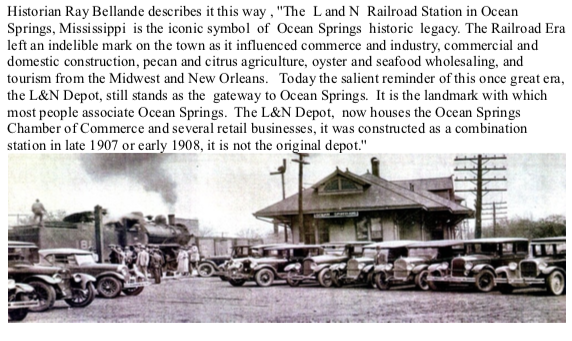
At Ocean Springs, L&N Railroad erected a new depot building east of the former structure.
1910
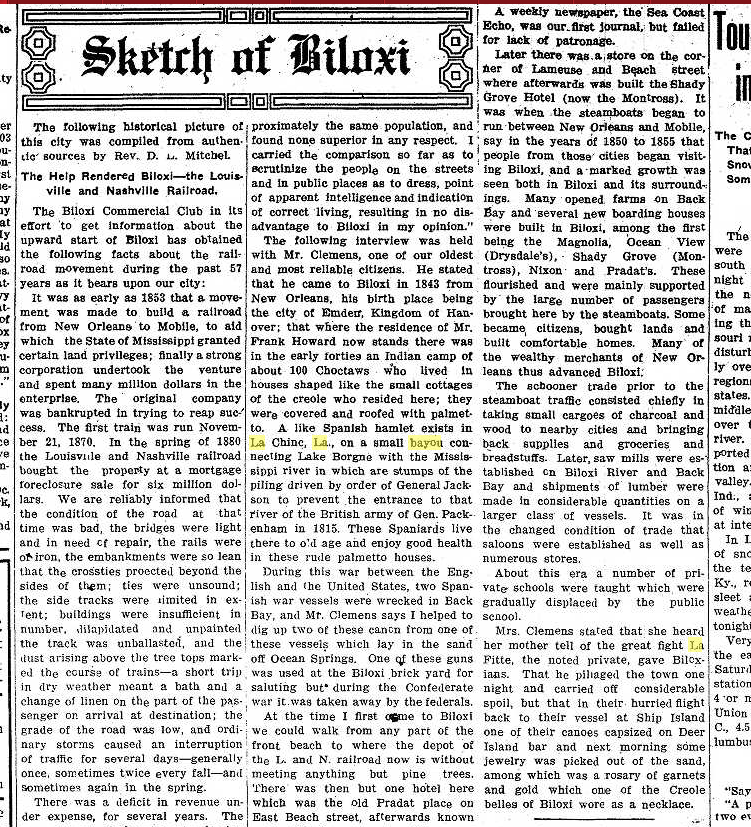
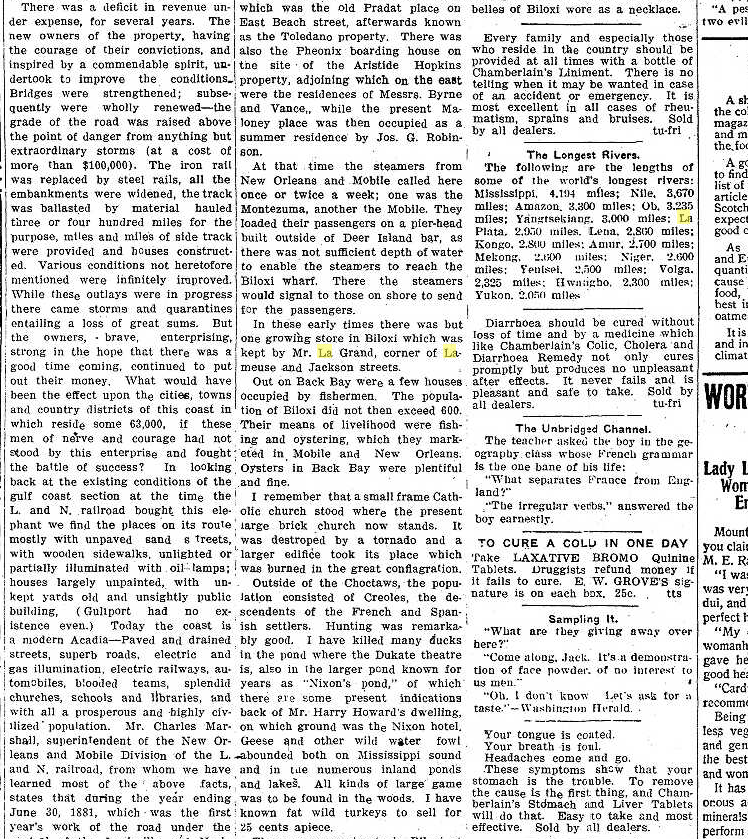
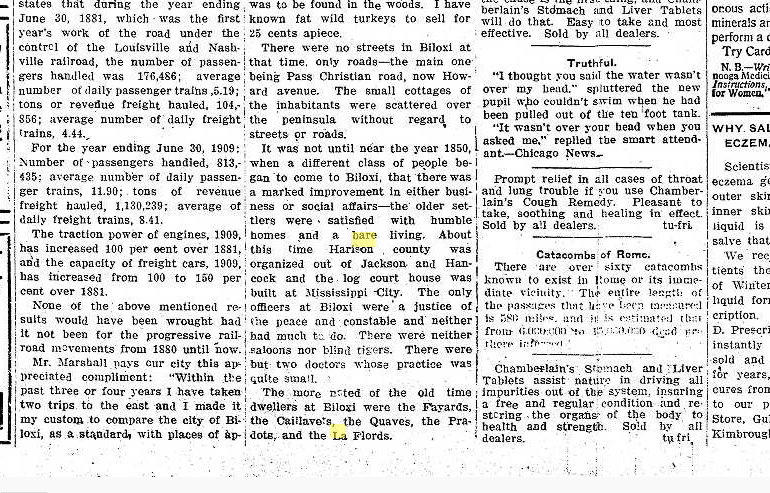
[from The Daily Herald, April 19, 1910, p. 6.
1911
It’s a representative warm and humid August afternoon, and I seek refuge and solace in the shade and serenity of Marshall Park. The bandstand is silent, the depot across Washington Avenue has been closed to passengers and freight for decades, and only an occasional fast freight roars through Ocean Springs to remind one of the railroad era of yore.
If these were times past, perhaps I would be waiting to board a train or meet arriving friends or relatives from New Orleans. Unfortunately it is 2004, and all that remains of the railroad era is the depot, a few railroad worker homes, and Marshall Park.
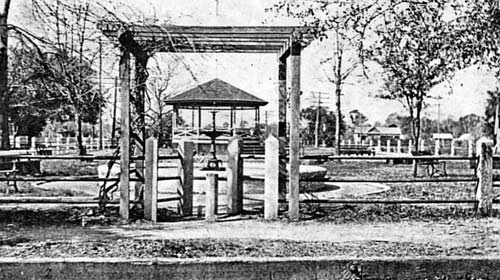
Marshall Park (ca 1930)
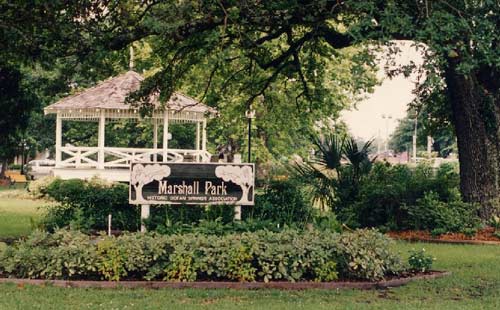
Marshall Park (ca 2002)
The Ocean Springs Civic Federation
Marshall Park was the idea of the Ocean Springs Civic Federation, an organization formed in 1911, to promote civic improvements within the city. They generally met at 3:00 p.m. on a Thursday afternoon at the Public School on County Road, now Government Street. Their dues were $1.00 per year for an active membership and $1.50 for an associate membership.
In 1914, the Civic Federation was led by local railroad man, A.J. Catchot (1864-1954). The other officers were: J.H. Behrens, 1st vice president; Amanda Shaffer (1841-1923), 2nd vice president; Mrs. Theo Bechtel (1869-1946), secretary and treasurer. Committee chairs were as follows: Mrs. C.S. Bell (1847-1932), program; Louise St. Martin, membership; Mrs. Robertson Palmer, work and workers; Ellen Woodruff, ways and means; J.H. Behrens, finance; and Mary Shanahan, hospitality. The Advisory Board was composed of: A.J. Catchot (1864-1954), Theodore Bechtel (1863-1931), Dr. H.B. Powell (1867-1949), Mrs. J. Davis, Mrs. George Westbrook, Mrs. C.S. Bell, Mrs. E.A. Morris (1872-1933), and Albert C. Gottsche (1873-1949). The Financial Report for the period March 16, 1913 to March 16, 1914 disclosed the following: cash on hand-$96.02 and published Cash donations-$165.00.(The Ocean Springs News, March 28, 1914)
Design
In May 1911, Charles F. Berge was employed by Superintendent Charles Marshall of the L&N Railroad to design and survey the future park. Mr. Berge resided at Biloxi were he made his livelihood as a landscape gardener.(The Ocean Springs News, May 20, 1911)
Name
At a meeting of the Civic Federation on May 18, 1911, J.H. Behrens (1848-1918), a retired Chicago businessman and owner of the Fort Bayou Fruit Company, proposed that the new park be called “Fountain Park”. His suggestion was tabled and Mrs. Behrens, president of the civic group, announced that she would be pleased to accept additional ideas at their next meeting.(The Ocean Springs News, May 20, 1911)
When the Ocean Springs Civic Federation met on May 25, 1911, they chose the name “Marshall Park”, which had been suggested by Albert E. Lee (1874-1936), the editor of The Ocean Springs News. Charles Marshall (1848-1928) was the very honorable Superintendent of the New Orleans & Mobile Division of the L&N Railroad from September 1886, until his retirement on August 1, 1917.(The Ocean Springs News, May 27, 1911)
Construction
By mid-June 1911, Marshall Park was well on its way to becoming a reality. Under the leadership of Civic Federation committeemen, J.H. Behrens, Theo Bechtel, and Dr. Henry B. Powell, laborers had completed the park’s format adopted by Civic Federation members. Walking paths were being constructed.(The Ocean Springs News, June 17, 1911)
Park Completion
Public use for Marshall Park commenced in late August 1911. The permanent walking paths were among the last details to be finished. They were well constructed and consisted of three tiers of laminated strata. Their basal foundations were composed of oyster shells, followed by cinders, and topped with marine seashells. Antique seating and water faucets completed the scene at Marshall Park.(The Ocean Springs News, September 2, 1911).
On September 9, 1911, Marshall Park was lauded by A.E. Lee, editor of The Ocean Springs News, in his journal as: A very pretty spot and a credit to the town, the Civic Federation and the Park Committee, Messrs. H.B. Powell, Theo Bechtel, and J.H. Behrens. It should be the desire and determination of every loyal citizen to make it still prettier and a place all can point to with pride.
L&N Railroad Agreement
In April 1911, Mary A. Ahrens, a visitor from Chicago and friend of the Bechtel family, who at this time was honorary president of of the Ocean Springs Civic Federation, received a letter from Charles Marshall of the L&N Railroad agreeing to give the use of the land west of the L&N depot at Ocean Springs for use as a public park and naming the Civic Association as steward of the property. Superintendent Marshall also consented to several recommendations by the Civic Association, which included: needed improvements as designated by the Civic Association and the erection of a sturdy iron fence to keep free range livestock from ingress into the park. In exchange, the Civic Association agreed to landscape and improve the property as to create a "show place" in the community.(The Ocean Springs News, April 8, 1911, p. 5 and April 22, 1911, p. 5)
Under the leadership of Mrs. Charles N. MacLouth and Mrs. Theodore Bechtel (1869-1946), the President and Secretary-Treasurer of that organization respectively, the Ocean Springs Civic Federation entered into an agreement on August 23, 1911 with the L&N Railroad. This agreement was to lease from the L&N Railroad a portion of their Station Ground at Ocean Springs for a public park. The land for the proposed park was described as follows: A strip of land lying on the south side of the track of the New Orleans & Mobile Division of the L&N Railroad, beginning at a point 175 feet east of mile post No. 727 on the line between the lands of said Railroad Company and the lands to be leased to said Civic Federation and running in an easterly direction with said Railroad a distance of 270 feet on the north line and 273.7 feet on the south line to the line between the lands of said Railroad Company and the lands to be leased to said Civic Federation said strip being 100 feet wide outside of a line 32 feet from the center of the main track of said Division, on east end of said lot, and 90 feet wide outside of a line 31 feet from the centerline of the main track of said Division.
The contract between the Ocean Springs Civic Federation and the L&N Railroad for the lease was written as follows:
Witnesseth, that for and in consideration of a rent of one dollar per year, to be paid by the said Civic Federation, the said Railroad Company hereby rents and leases said land to the said Civic federation for the term of 10 years from the date hereof, and the said Civic Federation accepts the permission of said Railroad Company to so hold as its tenant said land, and hereby covenants and agrees, and binds itself, its heirs and assigns, that it and all others who may claim, use, occupy, or enjoy said premises or any portion of them, by, through, or under it in anyway, will hold said land under said Railroad Company and in subordination to its title; and will deliver up the peaceful and quiet possession of said land and every portion thereof to said Railroad Company, or its agents, free from all claims and liabilities of every character whatever, at the expiration of said term of 10 years, and will remove any and all fences, hedges, or other means adopted to enclose said premises.
The Lessee agrees to keep the leased premises cleared of dry grass, weeds, and other combustible material; and the lessor shall not be liable for damage by fire on the leased premises, or communicated from the leased premises to the adjoining property, whether such fire may originate from sparks thrown by engines or any other cause in connection with the operation and maintenance of lessor's railroad, or otherwise.
It is further agreed that if the lessor should desire sooner a restoration of possession of the leased premises, the said Civic Federation lessee, will upon 30 days' notice, restore peaceable and quiet possession of said premises to the said Railroad Company.(JXCO, Ms. Land Deed Bk. 37, pp. 346-348)
Ocean Springs Brass Band circa 1916
[Courtesy of Peggy Carver Deshommes]
Top Row, L-R: T.J. Ames, director; George Friar; Daniel B. Van Court; Russell Carver; and John Seymour. Middle Row, L-R: Robert Friar; Frank E. Schmidt; George Dick; William T. Ames; Uriah Joachim; and Albert E. Lee. Bottom Row, L-R: Lloyd Netto; Ed Simmons; George Dale; and Bob Tucker.
The Ocean Springs Brass Band was organized in late March 1915, with the following leadership: George L. Friar (1869-1924), pres.; Russell A. Carver (1888-1961), vice-pres.; George C. Pabst (1881-1949), sec.; Ira W. Simmons (1867-1919), treas.; and Theodore J. Ames (1876-1927), band director. The group planned concerts in Marshall Park and to perform at local baseball games.(The Ocean Springs Record, March 25, 1915, p. 1)
1918 Speech
Despite an abundance of bugs and mosquitoes, Judge Paul B. Johnson of Hattiesburg, a candidate for Congress, spoke to a small group at Marshall Park. He appeared to be a viable candidate for the position. As a cure for the insect infestation in the park, it was recommended that someone mow the grass. The electric lights were also blamed for attracting bugs.(The Jackson County Times, June 15, 1918, p. 5)
1923 Water Crane
The L&N Railroad planned to erect a water crane opposite Marshall Park in late May 1923. The placing of a $3000 water crane here would eliminate the Washington Avenue crossing from being blocked when locomotives were taking on water.(The Jackson County Times, May 26, 1923, p. 5)
Fairy land
In May 1924, The Jackson County Times lauded Mr. George L. Friar, Major Henry B. Powell, Mrs. Marc Kean, Mrs. James Murphy, and Miss Kathryn Engbarth for transforming Marshall Park "a proverbial fairy land."(The Jackson County Times, May 10, 1924, p. 5)
Charles Marshall
Charles Marshall was a generous and imaginative man. He was born at Franklin, Tennessee on November 8, 1848. Marshall Park and other beautiful parks near L&N depots on the Mississippi coast were established during his tenure as superintendent. Marshall began his railroad service with the Nashville & Decatur Railroad at Franklin, Tennessee in 1864. He worked his way through the ranks employed as an operator, agent, and dispatcher at Lynnville, Columbia, Nashville, Pulaski, McKenzie, Memphis, and Clarksville in Tennessee. In 1881, he was transferred to New Orleans as freight agent, and was name superintendent in 1886. He moved to Bay St. Louis about 1893, and commuted to work in New Orleans on the fast Coast Train.
In the spring of 1897, Superintendent Charles Marshall was contemplating leaving the L&N Railroad to go to work with the Illinois Central Railroad. He was lauded by the writer of this news as follows: "He is highly esteemed, both personally and officially, wherever known, and the probability of his resignation is a source of sincere regret to his many friends along the Mississippi Coast."(The Biloxi Daily Herald, May 29, 1897, p. 1)
Friends of Charles Marshall described him as honest, courageous, and gracious in heart. He possessed a most remarkable memory and his knowledge of history and current events exceeded that of most men of his day. The men who worked for him had great respect and a paternal love for him. The commonest switchman would not hesitate to borrow a dollar from Charles Marshall. The debt was always repaid for Marshall never forgot anything.
In August 1917, Confederate veterans domiciled at Beauvoir's Soldier Home donated $15 to purchase a gold headed cane for Charles Marshall. This gift was in appreciation for Marshall's granting free transportation on the L&N line for soldiers' reunions and free passes for veterans returning home on furloughs from the Soldier Home at Biloxi.(The Daily Herald, August 9,1917, p. 2)
Other L&N Railroad Parks
Biloxi 1901
An example of the character of Marshall manifested itself in August 1901. Superintendent Marshall had promised the citizens of Biloxi a park in the rear of the L&N depot on Reynoir Street. A prominent businessman came to him and made a proposition to lease the property for twenty years and erect a large business and residential structure. In his reply to the proposition, he stated that in as much as he had promised to convert the lot into a park, he felt bound by the promise made, and would not lease it to anyone for any other purpose.(The Daily Picayune, August 13, 1901, p. 11)
The Biloxi Park was named in his honor upon its completion about 1912. The name was changed to Biloxi City Park in 1916, when the city leased it from the L&N Railroad.
Pascagoula 1912
Colonel Marshall also had his bridge and construction division erect a city park at Pascagoula, Mississippi. A.J. Catchot (1864-1954) of Ocean Springs supervised its erection which commenced in December 1912. The Pascagoula park was situated in the right-of-way of the L&N Railroad and consisted of fences, concrete walking paths, a fountain, bandstand, and appropriate landscaping. The City of Pascagoula agreed to monitor and clean the grounds and supply water to the fountain.(The Pascagoula Chronicle, December 21, 1912, p. 1)
Charles Marshall and his wife Lillian Willis were married in 1881, at Clarksville, Tennessee. They had four sons: Gilbert Marshall (b. 1882), Carl Marshall (b. 1884), Donald Marshall (b. 1887), and Geoffrey Marshall (b. 1890). Carl Marshall was born at New Orleans while his brothers were born in Tennessee.
During his active life, Marshall was deeply involved with the industrial and civic life of New Orleans. He was a member of the Louisiana Historical Society and the Louisiana Society of the Sons of the American Revolution. In Bay St. Louis, he was on the Board of Directors of the Hancock County Bank, and also a member of the Bay St. Louis Sea Wall and Bond Commission. Charles Marshall was a communicant of the Presbyterian Church and a member of the Masonic Lodge.
At the time of his death on January 14, 1928, Marshall and his wife were residing at Bay St. Louis. He was survived by his four sons: Major Gilbert Marshall of the U.S. Army in Atlanta, Carl Marshall, an attorney and State Senator from Hancock County, in Bay St. Louis, Donald Marshall, an instructor in the Boys' High School at New Orleans, and Geoffrey Marshall of the U.S. Army in Maryland. Charles Marshall was buried in the Cedar Rest Cemetery at Bay St. Louis. As his body was being placed for burial, a train at the L&N depot tolled its bell. Simultaneously a passing train paid a similar tribute.
It’s been a full day. The sun is low in the West and a subtle breeze reminds me that this pensive mood has lasted perhaps a few hours. As I leave the park for home, I say, "thanks Charles Marshall and the L&N for building this park, kudos to the Historic Ocean Springs Association for restoring it in 1989 for the use of the citizens of Ocean Springs, and applause and gratitude to a distinguished citizen of the community for the use of the land".
May the spirit, courage, and integrity of Charles Marshall remain with us forever.
WWII
In the late 1920s or early 1930s, the bandstand in Marshall Park was relocated to Dr. Powell’s property, the Bayou Inn, situated on the west side of Washington Avenue at Old Fort Bayou. During WWII, it was converted into a small living space. Fifty years ago, Harry Arnold III, a young naval aviator recently graduated from the PBY seaplane school at Pensacola discovered Ocean Springs. Lieutenant Arnold had been ordered to the Air-Sea Rescue School at Keesler AFB in Biloxi. Like many families arriving at Keesler Field in May 1944, the Arnolds had a difficult time finding adequate housing. Their story is interesting and a part of our colorful, local history. In the words of Harry Arnold III, their initiation to Ocean Springs follows:
I went uptown (Biloxi) to see if I could find a real estate office; the first one I found was a very small office with a gentleman by the name of Sherman (M.C. Sherman was a realtor and insurance agent located at 116 West Howard Avenue), sitting behind the desk. I went in and said, "hello, do you have anything for rent?" His answer was "NO". I told him that I had been in the real estate business before the war and then proceeded to tell my sad story about desperately needing a place to live so I could send for my wife and child, etc., etc.
Mr. Sherman, in a rather gruff manner, said, "I have a little place over in Ocean Springs, it isn't much but here's the key you can go and look at it." I was excited to know that that there was at least something to rent because, with all the military in the area, rentals were very scarce. I jumped into the car and raced across the bridge to Ocean Springs and down to the bayou to see a little one room, octagon-shaped house, located at the rear of what is now the Aunt Jenny's parking area.
It had one room and a very small step down kitchen area approximately 6'x 6' on one side, and about the same size step down little bathroom on the other side. The kitchen had a two burner stove (no refrigeration). The bathroom, in addition to a basin and a toilet, did have a shower. Furnishings consisted of a brass double bed, a small cot, a dresser, small table, and one chair. The closet was a curtain hung from a wire strung across one of the octagon sides.
To me it was a real find, so I rushed back to Sherman's office and said I would take it. I think the rent was about $28.00 per month. We moved in within the next several days and were very happy to have our little bayou band stand. Our aircrew friends would often come over and we would all just sit on the bed because we had only one chair!
Mr. Sherman and I became very good friends and he taught me how to fish the bay. He was a true southern gentleman who used to give me a hard time because I was a "northerner" from California. I always regretted that at the time I didn't know that my great grandfather was in Company H of the 3rd Virginia Infantry, and was captured at Richmond---it would have put me in an even better relationship with Mr. Sherman!
Our entertainment, when I wasn't flying or fishing, was to walk up the tracks to the train turn table and watch the locomotive engineer and fireman put a large timber into some brackets and slowly turn the engine around until it was reversed---a special treat for a four year old boy!
In late September of this year, the Arnolds returned to Keesler AFB for a fifty- year reunion of his PBY Catalina Emergency Rescue Squadrons, which trained there in 1944. Their nostalgia for life at Ocean Springs brought them across the bridge once more. Before they went looking for their "band stand" house on the bayou, Mrs. Arnold visited Bayou Belle and told proprietor, Dianne Lala, now Dianne Boyd, of their remembrances of war time Ocean Springs. In turn, Dianne related to the Arnolds the restoration of the Marshall Park band stand, their former "home", by HOSA in 1989. After a visit to the park, Harry Arnold described the refurbished structure as "looking nice and regal as the center piece of Marshall Park". Thank you Arnolds for returning to Ocean Springs and providing us with the photograph of your "old band stand home". Don't wait fifty years to come back!(The Ocean Springs Record, December 8, 1994, p. 3)
1972 Zoning Ordinance
In late July 1972, when the City of Ocean Springs enacted a comprehensive zoning ordinance, Marshall Park was zoned commercial. At this time, Albert S. Westbrook (1900-1980), Ward One Alderman, proposed an amendment to the zoning ordinance that would allow the Railroad Park to be zoned for public use rather than Commercial-2. His motion was not seconded and failed. The initial zoning map made in April 1972, had shown the railroad property as public use land. The Ocean Springs State Bank opposed this classification and a revised map presented in June 1972, redefined Marshall Park as commercial.(The Ocean Springs Record, July 27, 1972, p. 1)
In June 1972, a body called “Group of Concerned Citizens” began to lobby the City government to prevent destruction of Marshall Park by commercial interests. A rumor that the Ocean Springs State Bank was planning to acquire the property and erect a new bank building was the catalyst for their formation. The Jaycees also opposed the bank location in Marshall Park.(The Ocean Springs Record, June 15, 1972, p. 1, June 22, 1972, p. 1, July 27, 1972, p. 5 and August 17, 1972, p. 5)
L&N Sells
In September 1973, John A. Switzer acquired the railroad park at Ocean Springs from the L&N Railroad for $30,000.(JXCO, Ms. Land Deed Bk. 477, p. 399)
Mr. Switzer sold the park to Eleanora Bradford Lemon in April 1974.(JXCO, Ms. Land Deed Bk. 497, p. 51)
Bandstand Relocation
Its current owners, Carl Lizana and Ronnie Hamilton, proprietors of Aunt Jenny’s Restaurant, donated the old bandstand, which had been removed from Marshall Park in the past, to the City. This popular catfish eatery occupies the premises once called the Bayou Inn. In February 1989, Bobby Lewis and Ray Beaugez, local contractors, prepared the structure for relocation to Marshall Park. Local architect, Bruce Tolar, made recommendations concerning the condition of the building. All services were pro bono. Kenneth Harper House Movers of Mobile, Alabama moved the bandstand to Marshall Park in early March 1989.(The Ocean Springs Record, March 9, 1989, p. 1 and The Sun Herald, March ?, 1989, p. A1)
Fund Raising
On March 31, 1989, the first fundraiser to support the restoration of the Marshall Park bandstand was held by HOSA at the Ocean Springs Community Center with the theme “Strike up the band “stand.” Jeff Lawson, WLOX-TV personality, was master of ceremonies for the event. A live auction was supported by gifts and donations of the following local artisans and business people: Kris Byrd, Gayle Clark, Thomas Ehrensing, Haneke Gast, Judy Moreton Howell, Miek Laan (1912-1998), William Mitchell, Herb Moore, Elva Rouse, and Sue Weidie.(The Ocean Springs Record, March 30, 1989, p. 1)
Restoration
In early June 1989, Bobby Lewis, local contractor, with the assistance of Greg Denyer, a high school teacher, volunteered their time and skills to restore the old bandstand. The walls were removed and rotten wood replaced. In addition a new shingle roof was added to the 1912 building.(The Ocean Springs Record, June 8, 1989, p. 3)
Gulf War Dedication
On March 26, 1991, Senator Trent Lott was at Ocean Springs to dedicate the revised and restored Marshall Park. He was introduced by Mayor Kevin Alves. Senator Lott gave HOSA an American flag, which had once flown over the Nation’s capitol. The park’s flagpole had a night light, which allowed the flag to be flown at all times. Larry Cosper, HOSA spokesman said, “It seems like a simple thing, putting up a flag, but HOSA worked for a long time in getting just the right flag, and putting it in just the right place. We’re very excited about it and think it will be a great asset to the park.” (The Ocean Springs Record, March 21, 1991, p. 1 and March 28, 1991, p. 1)
HOSA LEASE
In December 1998, Eleanora Bradford Lemon gave HOSA, an acronym for Historic Ocean Springs Association, a forty-year lease on Marshall Park. HOSA as steward of Marshall Park has obligated itself to keep the area open for public use; maintain the green space; and pay the annual taxes for the duration of their lease which commenced on January 1, 1999 and extends to December 31, 2038.(JXCO, Ms. Land Deed Bk. 1161, p. 135)
REFERENCES:
Magazines
The Louisville & Nashville Employees' Magazine, February 1928, pp. 17-18.
Journals
The Daily Picayune, “Biloxi Will Have Another Park”, August 13, 1901.
The Biloxi Daily Herald, "Charles Marshall", May 29, 1897.
The Daily Herald, "Cane for Marshall", August 9, 1917.
The Jackson County Times, “Col. Marshall Retires”, August 4, 1917.
The Jackson County Times, “Local News Items”, June 15, 1918.
The Jackson County Times, “A plea for Marshall Park”, ?, p. 5.
The Jackson County Times, “Local and Personal”, May 26, 1923.
The Jackson County Times, “May Festival”, May 10, 1924.
The Ocean Springs News, “Local News”, April 8, 1911.
The Ocean Springs News, “Local News”, April 22, 1911.
The Ocean Springs News, “Civic Federation Notes”, May 20, 1911.
The Ocean Springs News, “Local News”, May 20, 1911.
The Ocean Springs News, “Local News”, May 27, 1911.
The Ocean Springs News, “Local News”, June 17, 1911.
The Ocean Springs News, “Local News”, September 2, 1911.
The Ocean Springs News, “Local News”, September 9, 1911.
The Ocean Springs News, “Statement of Civic Federation”, March 28, 1914.
The Ocean Springs Record, “Citizens protest bank location at Park”, June 15, 1972.
The Ocean Springs Record, “Jaycees oppose bank location”, June 22, 1972.
The Ocean Springs Record, “Ocean Springs adopts a comprehensive zoning ordinance”, July 27, 1972.
The Ocean Springs Record, “Citizens Should Save Railroad Park”, July 27, 1972.
The Ocean Springs Record, “Lack of Civic Concern”, August 17, 1972.
The Ocean Springs Record, “Moving Day”, March 9, 1989.
The Ocean Springs Record, “Bandstand fundraiser off to flying start”, Mach 30, 1989.
The Ocean Springs Record, “Restoration Begins”, June 8, 1989.
The Ocean Springs Record, “HOSA plans flag raising in Marshall Park”, March 21, 1991.
The Ocean Springs Record, “HOSA raises flag in Marshall Park”, March 28, 1991.
The Ocean Springs Record, “Couple returns after 50 years to visit ‘old bandstand home’”, December 8, 1994.
The Pascagoula Chronicle, “Will Build Park”, December 21, 1912.
The Daily Herald, “Cane for Marshall”, August 9, 1917.
The Daily Herald, “Col. Marshall Passes Away”, January 14, 1928.
The Daily Herald, "Know Your Coast" by Ray M. Thompson, 1952.
The Daily Picayune, August 13, 1901, p. 11.
The Sun Herald, "Movers haul Ocean Springs bandstand to new site in park, March 1989, p. A1.
Personal Communication
J.G. Lachaussee - CSX Corporation, Orange Park, Florida
J.K. Lemon - Realtor, Ocean Springs, Mississippi
___________________________________________________________________________________________________________________________________________________________
1947
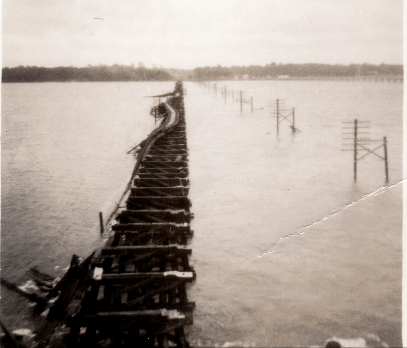
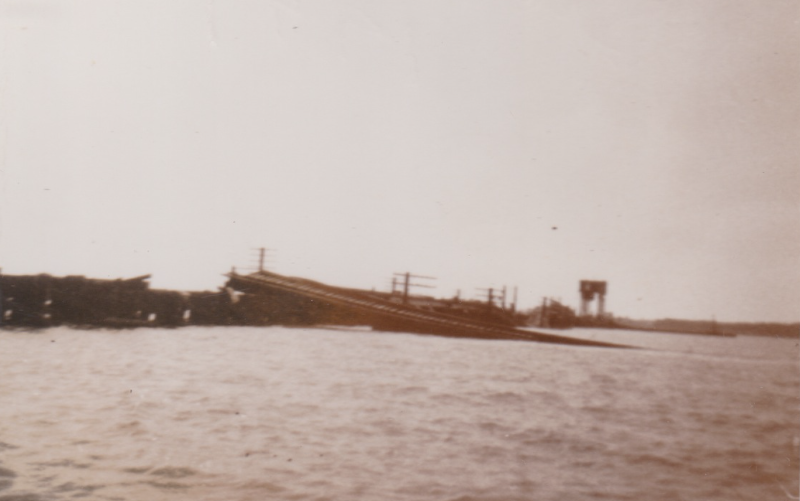
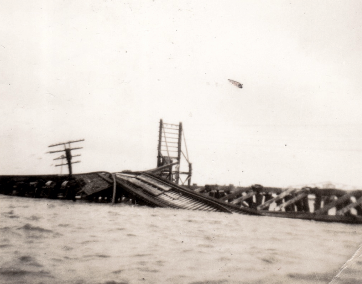
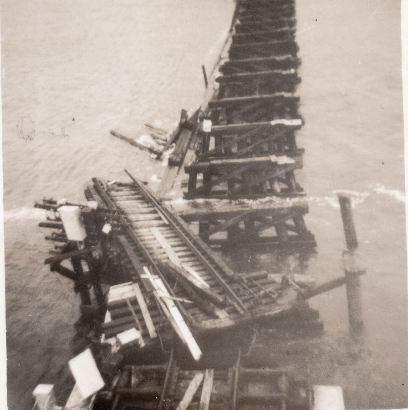
L&N RR Brdige across Biloxi Bay
Damage from the September Hurricane of 1947
1948
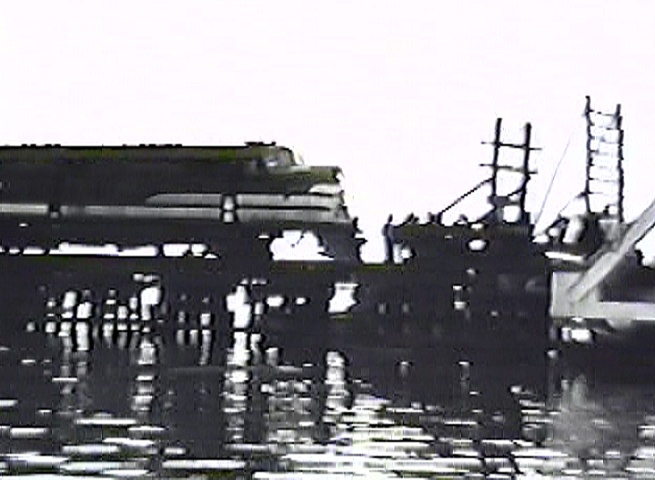
1948
L&N No. 1 Engines 774-754 left Ocean Springs on February 5, 1948, in dense fog. The signalling on the Biloxi bridge had not been restored and at the time No. 1 was creeping along the trestle, the draw had been opened for a tug and tow. The engineer didn't see the red kerosene lantern the drawtender had placed on the end of the fixed span until it was too late to stop. The 774 went over the end of the trestle and lost its front truck. Later, when the rear of No. 1's train was pulled back off the bridge, trainmen commented that the fog was so dense that lighted red fusees could be seen only about 150 feet away.[Jerpme Lauchausee, Februay 21, 2020 and The Daily Herald, February 7, 1948. Image courtesy of Kenneth Fountain and August Taconi]
1964
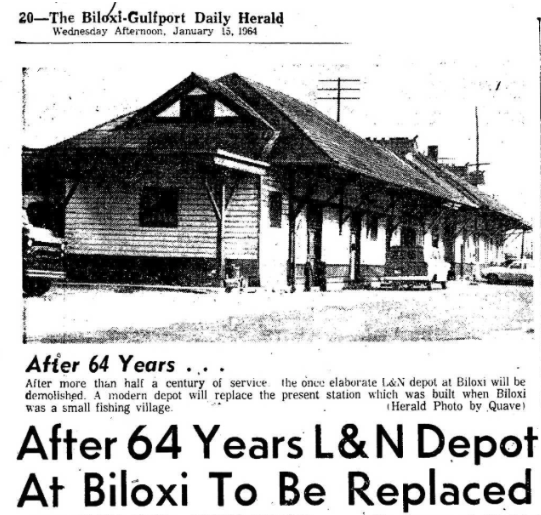
[The Daily Herald, January 15, 1964, p. 20]
The new L&N Depot, a metal building [120 feet by 32 feet] situated just west of the 60 year old wooden depot, was schedule to be completed in early August. It was erected by the Marion Brick, Tile, and Cement Company. The old structure was to be dismantled.(The Daily Herald, July 9, 1964, p. 5)
- 1891 views
